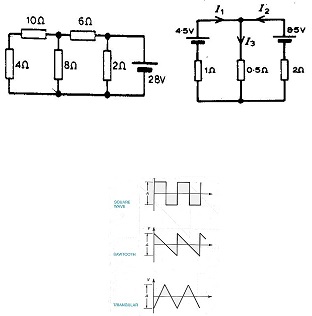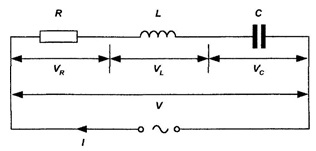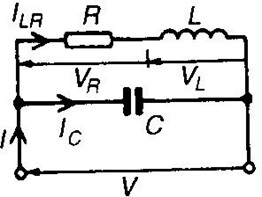Reference no: EM132724598
Unit 03 Engineering Science - Higher National Certificate in Electrical and Electronic Engineering
Assignment - Applications of the physical sciences to Engineering problems
Learning Outcome 1: Examine scientific data and apply appropriately using computational methods.
Learning Outcome 2: Determine parameters within mechanical engineering systems
Learning Outcome 3: Explore the characteristics and properties of engineering materials
Learning Outcome 4: Analyse applications of A.C./D.C. circuit theorems, electromagnetic principles and properties
Scenario:
You are employed as a trainee engineer in amegatronics laboratory and the position requires you to have a fundamental understanding of mechanical and electrical concepts. You have been informed by your potential supervisor that you need to improve and update your knowledge in the following areas: SI units, interpreting data, static and dynamic forces, fluid mechanics and thermodynamics, material properties and failure, and circuit theories. Your potential supervisor has set the following tasks in order to assess your suitability to work in the capacity as a trainee engineer
Task 1.0
You have been given samples of metals, composite and polymer materials. You are required to carry out tests on one of these materials and present a formal laboratory report. Your senior engineer has asked you to present to an audience an analysis of the scientific data using both computational and qualitative methods using an appropriate software package.
You should ensure that your report includes the following elements:
• The SI units used including prefix notation, symbols and derived units
• Graphical representations of the quantitative and qualitative data gathered, using appropriate software
• Reflection on the application of the scientific method (demonstrated in your laboratory report) for the testing you carried out.
• an analysis of all the graphical data presented (qualitative and quantitative information from Part 1 and Part 2).
• Full citation/references using an acceptable referencing system.
Task 2.0
Your manager wants you to write a formal report on the potential in service conditions that may have caused material failure and the structural properties of the given metals, polymer and composite that you have been investigating in Task 1.0.
You should consider the effect of degradation on the appearance of the given materials in task 1.0 and gather qualitative feedback from colleagues on the potential causes of failure. This feedback/data will be presented, using appropriate graphical software within your report.
Your report should reflect on the application of the scientific method (demonstrated in your laboratory report) for the testing you carried out. There should also be an analysis of all the graphical data presented (qualitative and quantitative information from Task 1 and Task 2).
• A description of the structural properties linked to their respective material properties
• An explanation and comparison of the types of degradation including elastic, electrical and magnetic hysteresis
• Critical comparison of how changes in the thermal efficiency of a heat transfer process can be affected by the by the behavioural characteristics of mechanical systems.
• Full citation/references using an acceptable referencing system.
Task 3.0
3.1 A simply supported beam of length 6m supports a vertical point load of 45kN at a distance of 4m from one end.

3.11 Determine the reaction forces at either end.
3.12 Recalculate the reaction forces at either end, taking into account the actual weight of the beam as a UDL. Assume that the mass of the beam is 39Kg/m and g= 9.81 m/s2
3.2 Examine two engineering applications of buoyancy?
3.3 Discuss briefly the temperature effects on mechanical properties such as a dimensional change, elasto-plastic changes, due to thermal stresses.
3.4 Find the acceleration which will be produced in a body having a mass of 60 kg when a force of 150 N acts on this body by using d'Alembert's Principle.
3.5 For a domestic hot water system, a copper pipe carries hot water at 70 0c and has an external diameter of 150 mm and is lagged to an overall diameter of 500 mm. If the surface temperature of the lagging is 20 0C determine the rate of heat loss per metre length of pipe if it can be assumed that the inner surface of the lagging is at the hot water temperature. The thermal conductivity of the lagging is 0.09 W/mK.
Task 4.0
4.1
4.11 For the network shown in Fig 2.0, determine Th'evenin's equivalent circuit
and the current flowing in the 4 ? resistor. Assume that the battery has negligible internal resistance.
4.12. Use the superposition theorem to find currents Ii , I2 and I3 of Fig 3.0
4.2 Show how the following complex waveforms are produced from sinusoidal waveforms.
A = 10 V.

4.31

A coil of inductance 74 mH and resistance 28 ohms in series with a 50uF capacitor is connected to a 250 V,50 Hz supply. Calculate:
i. The current flowing ii The voltage across L and C.
ii. Sketch the phasor diagram
4.32
A coil of resistance 25 ? and inductance 100 mH is connected series with 0.12 uf capacitor across a 120 V, variable frequency supply. If R is small compare with XL as in radio circuits, Determine:
• the resonant frequency
• the Q - factor at resonance
4.41
Explain the operation of a transformer using the principles of electromagnetic induction.
4.42
A 300 kVA transformer has a primary winding resistance of 0.4 ? and a secondary winding resistance of 0.0015 ?. The iron loss is 2 kW and the primary and secondary voltages are 4 kV and 200 V respectively. If the power factor of the load is 0.78, determine the efficiency of the transformer on full load
4.51 Refer to the circuit shown in Fig 6.0

Fig 6.0
R = 60 ohms, L = 318.4 mH, C= 15 uF, V= 200V, 50 Hz.
Calculate:
• The current in the coil
• The current in the capacitor
• The supply voltage and its phase angle
• The circuit impedance
• Sketch the phasor diagram
4.52 Validate the results using simulation packages.
Attachment:- Engineering Science.rar